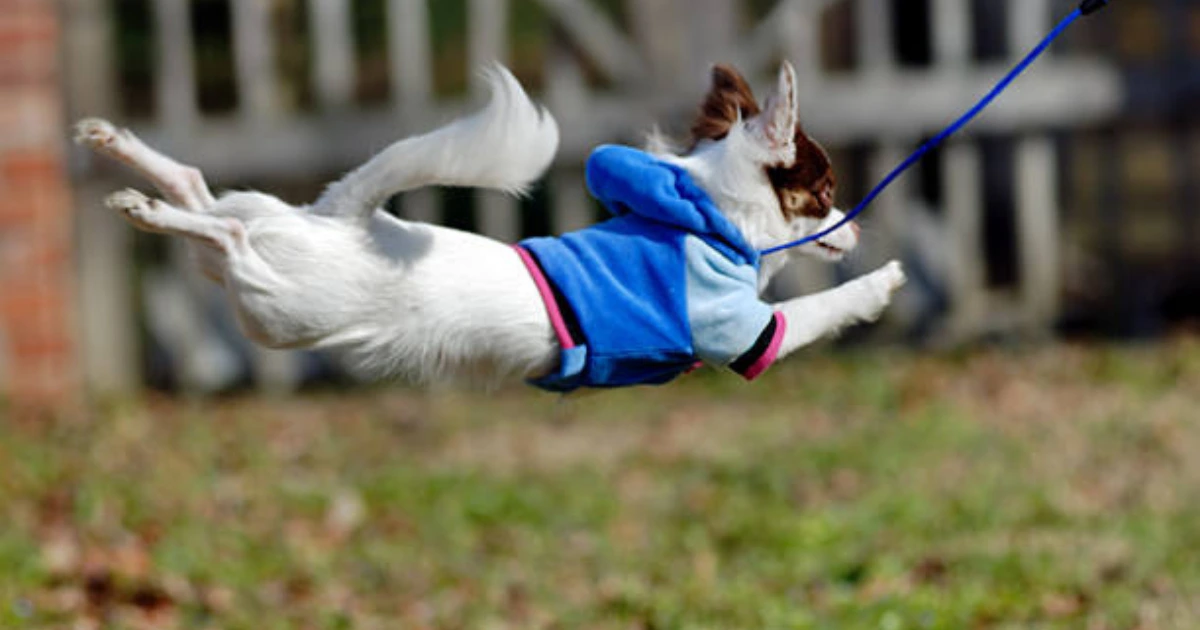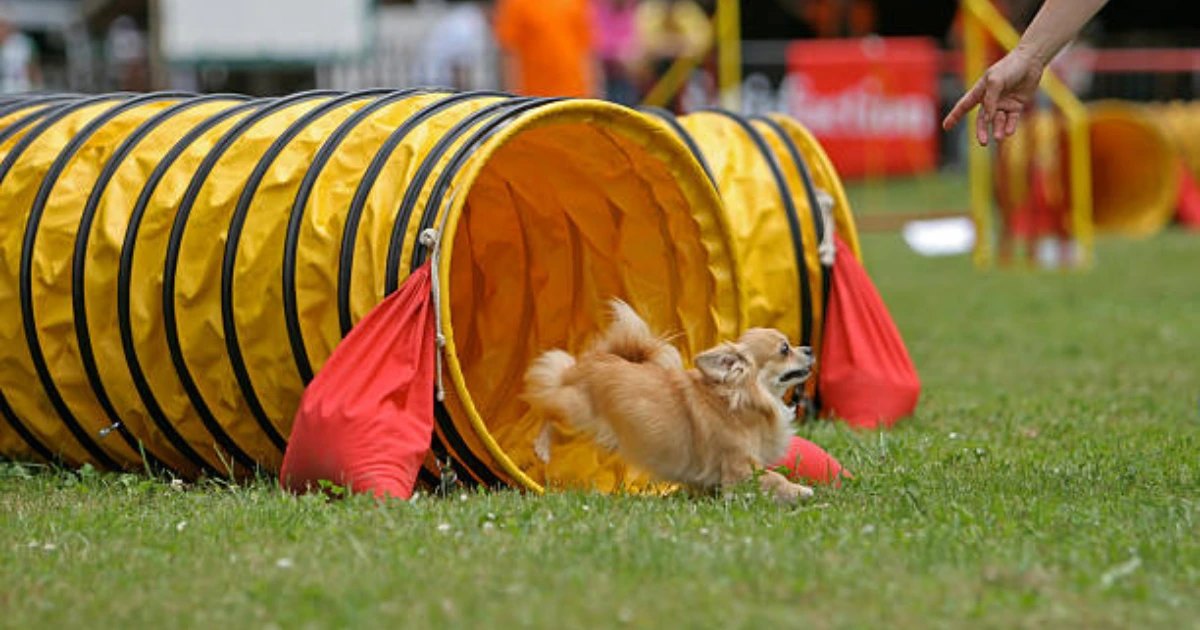Have you ever questioned how long should I walk my chihuahua?? Are you content with how much time your chi spends soaking up the sun? Or perhaps you’re an active dog owner who wonders if your canine companion can keep up with you on your daily 2-mile runs.
Don’t worry if you’ve experienced these thoughts. You’ll hopefully learn more about how much exercise is suitable for your chihuahua after reading this post.
Regular walks are crucial for your chihuahua’s health, but taking them too frequently might put undue stress on their body. Knowing this is helpful.
Advertisement
Considerations For Estimating Walk Duration
For healthy dogs, a number of crucial elements that affect how much exercise they need each day include:
- Age
- Their Breed
- Any existing medical issues
- Level of your chihuahua Fitness State.
For the majority of chihuahuas, roughly 30 minutes of activity each day is fantastic. Sometimes they can go further, however, it may be advisable to gradually increase the length.
But, for new chihuahua parents, 30 minutes is typically a decent place to start.
1. Your Chihuahua’s Age
Age has a direct impact on your dog’s capacity for physical exertion and his requirement for regular exercise.
Similar to people, dogs slow down as they reach a certain age. Similar to kids, pups too require some exercise to develop their strength.
When it comes to human years, your dog’s first birthday corresponds to roughly 15, and its second birthday to about 24. In about 6–7 years, your chi will graduate as a senior. What does this imply for their capacity to cover great distances on foot?
Puppies
Before you do anything else, keep in mind that it’s not advised to take your puppies on a walk before they’ve had their shots. There are numerous canine pathogens. For instance, the canine illness parvovirus, which may be acquired anywhere in public, has an 80% death rate for puppies.
Once your dog has had all of the recommended vaccinations, you should feel more at ease taking your dog for a walk. Your puppy may handle up to five minutes of walking time per month of age, roughly, during the first six months.
If your chihuahua is three months old and has had all of its puppy immunizations, for instance, 15 minutes of activity each day should be ideal.
Adult Chihuahua
Around 10 to 12 months, chihuahuas stop physically growing, and at this point, they are regarded as having reached adulthood.
Your chi should be able to handle longer walks with fewer rests by this point. If your adult chihuahua is robust and healthy, he or she can most likely walk with you once or twice a day for at least 30 minutes.
Senior Chihuahua
Exercise is essential every day, regardless of age, especially for senior dogs. Even as they age, dogs’ love for walking remains unwavering despite changes in their energy levels and mobility. In fact, when they see the leash, your dog will probably exhibit the same amount of excitement as previously.
A 10-year-old Chihuahua is equivalent to a 56-year-old adult, did you know that? You read it correctly! Dogs age biologically more quickly than humans since they have shorter lives. A human can often live up to 80 years or more, but the average lifespan of a dog varies by breed and is between 10 and 13 years (chihuahuas can live up to 18 years or more).
One implication is that canines age and deteriorate more quickly than people. Yet, this only emphasizes the importance of regular exercise because it will surely increase your dog’s longevity and give them more stamina to fend against illnesses.
You can go for shorter walks with your elderly dog. This implies that your dog can still complete a 30-minute stretch as they mature, but with more breaks. Consult your veterinarian and other dog owners who are going through the same period of parenting if you’re unclear about your dog’s physical state and ability.
2. Your Dog’s Breed
Undoubtedly, a dog’s breed has a significant impact on how often it might need to be walked. For instance, a working dog like a border collie could need hours of exercise each day, whereas a pug or chihuahua would need just a few hours of exercise before taking an all-day snooze!
The tiniest breed of dog is the chihuahua. They can reach a height of 6–9 inches and weigh 2–6 pounds. Chihuahuas need less activity than larger breeds that need 60–120 minutes or more of exercise daily, such as Bichons and Shih Tzus, to mention a couple.
Yet, be aware that chihuahuas, despite their diminutive stature, are incredibly animated canines. Chis are noted for being affectionate lap dogs while being inherently spirited and seeking physical play frequently. If you decide to have one, be prepared to walk them frequently or employ a dog walker to meet their insatiable appetite for entertaining activities.
Your Chihuahua is built for exercise, even if it only amounts to a few 30-minute sessions per day; exercise should be a regular part of their daily routine, whether that be a walk around the block or backyard games.
3. Medical Issues
Chihuahuas are susceptible to a number of illnesses, such as luxating patellas, hip dysplasia, and cardiac issues.
The majority of the time, these conditions prevent them from engaging in rigorous physical activities like long walks, so it’s important to consult your veterinarian about the ideal level of exercise in this situation. This also holds true for other illnesses, such as luxating patellas.
If nothing else, breaking up a walking activity into several halves is a suggested technique. A 30-minute stroll can be broken up into several shorter ones throughout the day. Their joints will endure less additional stress or harm as a result.
Some ailments, such as Intervertebral Disc Disease (IVDD), can significantly reduce a dog’s physical capabilities. Age-related IVDD, which frequently affects dogs like dachshunds and causes muscle spasms and paralysis in their rear legs, affects the spine of dogs. Some dogs may have a shorter maximum walk time due to disorders like IVDD. Your veterinarian can assist you in developing a regimen of exercise that is acceptable for your pet if such symptoms are present.
3. Your Dog’s Fitness Level
It can be preferable to start with shorter distance walks if your chihuahua is not accustomed to sustained physical activity. Diving directly into long walks can cause issues including paw pad wear and tear, stifle pain, and stress, all of which can result in health problems.
The ideal daily stroll should last 30 minutes, but a dog that has never participated in regular exercise may not be able to keep up. Similar to older dogs, it’s ideal to break up a walking routine into shorter intervals to account for the decreased stamina brought on by inactivity.
Things You Should Keep In Mind
1. Your Supervision
These recommendations are really just common sense. The greatest people to know your dog are you and your veterinarian. Furthermore, getting input from your dog will be helpful as you research the ideal amount of walking for your chihuahua. For instance, it might be advisable to cut the walk short if your chihuahua wants to be picked up in the middle of it.
- How long is too long?
Your Chihuahua may slow down and begin to pant if you exert him excessively. These are the initial indications you’ll see.
Pushing your chihuahua above his boundaries could have long-term harmful impacts on him. The panting, slowing down, lack of interest in the action, and stopping while walking are all indications that a dog is over-exhausted. Your pet may occasionally, especially in the worst-case scenarios, suffer from joint issues as well as paw pad deterioration.
- How To Tell If Your Chihuahua Requires More Exercise
An inactive Chihuahua can be identified rather easily. They are disruptive, restless, and energetic, and they frequently use attention-seeking behaviors like barking to let off pent-up energy.
Last Word
In conclusion, an adult chihuahua should walk for roughly 30 minutes each day. But, based on your vet’s recommendations, web research, and the instructions from this page, you’ll likely want to reduce that quantity if your chihuahua is extremely young or old, or has medical concerns.
YOU MAY ALSO LIKE:
How To Walk A Chihuahua That is Aggressive
Can My chihuahua compete in agility?
Advertisement
















